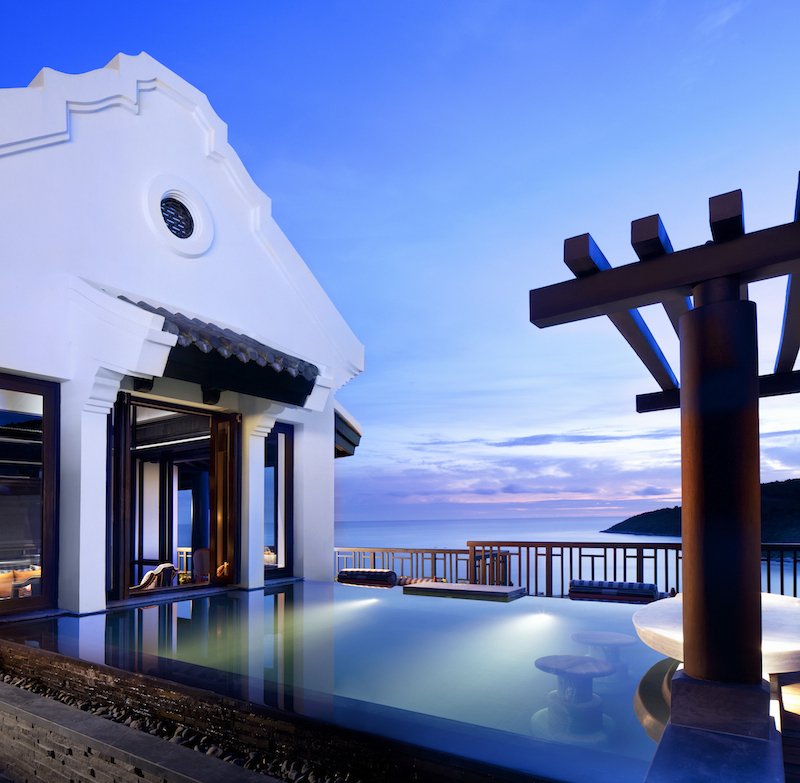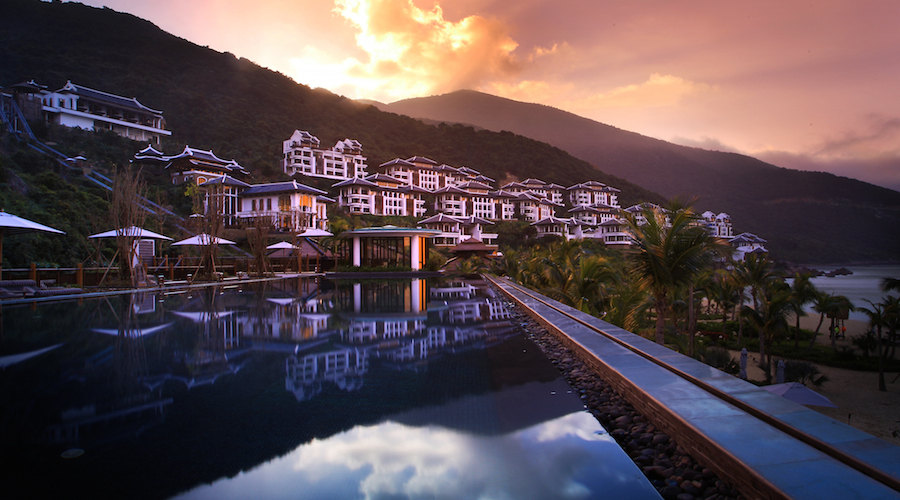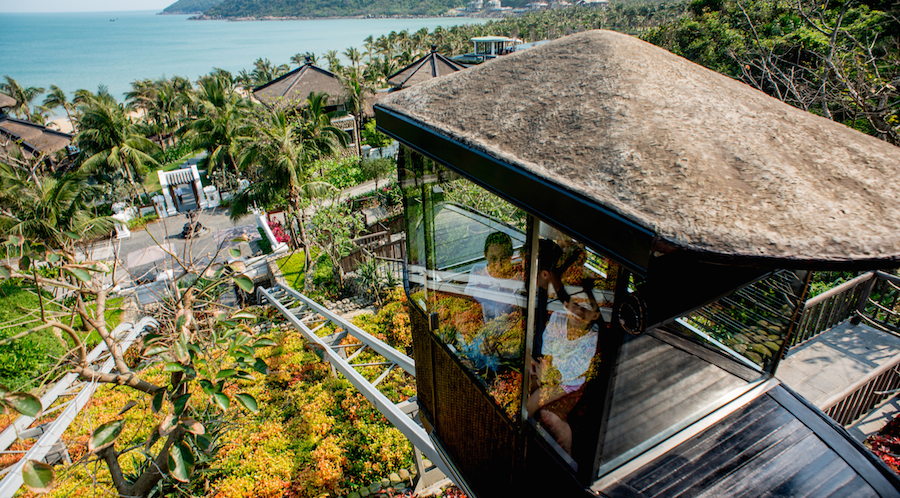Golden Sands: Make Da Nang Your Launchpad for a Tour of Central Vietnam
Located within 100km of the Imperial City of Hue, the old town of Hoi An, and the ancient My Son ruins, Da Nang is perfect for a short getaway from Beijing that mixes culture, heritage, and relaxation. The fifth largest city in Vietnam, with a population of one million, Da Nang itself isn’t the most atmospheric of cities, but its long, sandy beaches more than make up for it. The best time to visit is in March and April when the weather is dry and warm, with temperatures in the low 80s (degrees Fahrenheit). China Eastern flies direct to Da Nang (four hours) twice a week, or alternatively Vietnam Airlines flies to Da Nang via Hanoi.
Where to stay: The Intercontinental Da Nang Sun Peninsula Resort is the undisputed leader of luxury in Da Nang. Spread over a lush hillside, the 200 rooms and villas meander down to a curve of private beach, the only resort in Da Nang to have one. Guests are shuttled around the resort in golf buggies, while a funicular railway connects the highest and lowest levels. The resort is a 20-minute drive from Da Nang proper, but there is plenty to do without having to leave. Try a relaxing treatment in the HARNN Heritage Spa or grab a beachfront drink in the Long Bar, under the breeze of traditional punkah fans. For a real treat, book a stay in a Heavenly Penthouse (from approx. RMB 7,500 per night). Perched high above the resort, the penthouses come complete with sweeping views from the private pool and sundeck, and 24-hour butler service.

What to see:
Hoi An: The UNESCO World Heritage-listed old town of Hoi An is a 40-minute drive from Da Nang. A major international port up to the 17th century, Hoi An has been strongly influenced by Chinese culture, both from traders and Ming Dynasty refugees escaping the encroaching Manchu armies. The old town is remarkably well preserved, and although the tourism industry is in full swing, there are still many old shop houses and Chinese-style temples to be explored among the atmospheric narrow lanes. Entry to the sites in Hoi An is via a coupon that allows you entry to five historical landmarks (VND 120,000, approx. RMB 34).
My Son: Another designated UNESCO World Heritage Site, My Son was built as a temple complex by the Hindu-practicing Cham civilization, who ruled central Vietnam from the 2nd century to the 17th century. The ruins of My Son are often compared to contemporaneous sites like Angkor Wat or Borobudur, but in reality the already small scale ruins have been badly damaged by years of war and poor upkeep prior to their obtaining UNESCO state is 1999. Still, the jungle scenery alone is worth the trip. To really take advantage of My Son, join a small tour leaving at 7am, ensuring you’ll be the first to enter the site when it opens at 8am. The Museum of Cham Culture: Imagine My Son in its heyday at this museum in Da Nang housing a collection of stone statues from the Cham civilization. Removed from the site in the early 20th century before they could be looted, the statues include depictions of Hindu gods, animals, and lingam-yoni fertility altars.

What to eat: For an approachable introduction to the food of central Vietnam, try The Last Great Taste of Hoi An tour (tasteofhoian.com). Hosted by loquacious Australian expat Neville and his wife Colleen, the tour samples more than 40 local dishes and snacks, including Hoi An’s famous rice noodle dish, cao lau, which, in order to be authentic, must be made with the water of a 1,000-year-old well.
If you prefer cooking to eating, check out Green Bamboo Cooking School (greenbamboo-hoian.com). Multilingual Vietnamese cook Van (USD 40, approx. RMB 250) teaches small, personalized classes from her home on the outskirts of Hoi An. You will be picked up from your hotel (small extra charge for hotels in Da Nang) before being whisked off to the market to buy the ingredients to cook a local dish of your choice. One of the most comprehensive cooking classes we have tried anywhere.
In Da Nang itself, the seafront is rimmed with restaurants serving freshly caught seafood and smoky-sweet barbecued meats. New restaurant Quan Come Hue Ngon serves excellent barbecue pork on a streetside terrace.
More stories by this author here.
Email: robynnetindall@thebeijinger.com
Instagram: @gongbaobeijing
Twitter: @gongbaobeijing
Weibo: @宫保北京
Photos courtesy of Intercontinental Da Nang Sun Peninsula, Robynne Tindall


